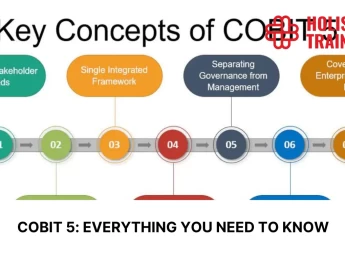- Table of Contents
- What Causes Conflict in the Workplace?
- How to Identify Early Signs of Conflict?
- What are the Different Types of Workplace Conflict?
- How to Foster a Positive Work Environment Amidst Conflict?
- How to Encourage Collaboration and Teamwork Despite Conflicts?
- What Are the Long-term Benefits of Successfully Resolving Workplace Conflict?
Introduction
Workplace conflict is a common challenge faced by organizations, impacting productivity, morale, and overall success. Understanding the causes, early signs, and types of conflicts is crucial for effective resolution and creating a positive work environment. This article explores key insights and strategies to help organizations navigate and resolve workplace conflicts successfully, fostering collaboration, communication, and mutual respect among team members.
What Causes Conflict in the Workplace?
Conflict in the workplace can stem from various factors, including:
- Differences in Goals and Priorities: When team members have conflicting objectives or priorities, it can lead to disagreements and tensions.
- Communication Issues: Poor communication, misunderstandings, or lack of clarity in instructions can create confusion and conflict.
- Personality Clashes: Differences in personalities, work styles, or values can result in friction among colleagues.
- Competitive Work Environment: High-pressure environments where competition is encouraged can lead to conflict as individuals vie for recognition or promotions.
- Lack of Resources: Limited resources such as time, budget, or manpower can lead to conflicts over allocation and prioritization.
- Role Ambiguity: Unclear roles and responsibilities can cause overlap or gaps, leading to conflict over tasks and accountability.
- Leadership Styles: Conflicts can arise due to differences in leadership approaches, decision-making styles, or management practices.
- Organizational Changes: Changes in structure, policies, or procedures can disrupt workflows and lead to resistance and conflict among employees.
- Discrimination and Harassment: Issues related to discrimination, harassment, or unfair treatment can result in serious conflicts in the workplace.
Understanding these causes can help organizations proactively address and manage conflicts to maintain a productive and harmonious work environment.
How to Identify Early Signs of Conflict?
Identifying early signs of conflict is crucial for addressing issues before they escalate. Here are some key indicators to watch for:
- Increased Tension: Observe if there's a noticeable increase in tension or discomfort during team interactions. This could manifest as passive-aggressive behavior, sarcasm, or frequent disagreements.
- Communication Breakdown: Notice if there's a breakdown in communication, such as misunderstandings, lack of clarity in messages, or avoidance of discussions on certain topics.
- Decreased Collaboration: Pay attention to any decrease in collaboration or teamwork among team members. This could be seen as individuals working in silos, reluctance to share information, or a decline in participation in group activities.
- Change in Behavior: Look for changes in behavior, such as increased irritability, mood swings, or withdrawal from team activities. These can be signs of underlying conflict or dissatisfaction.
- Rumors and Gossip: Watch out for rumors, gossip, or negative talk about colleagues or work-related matters. These can indicate brewing tensions or unresolved issues.
- Performance Issues: Monitor any sudden changes in performance, productivity, or quality of work. Conflict can sometimes impact individual and team performance negatively.
- Body Language: Pay attention to non-verbal cues like body language, facial expressions, and tone of voice. Signs of discomfort, defensiveness, or avoidance can signal underlying conflicts.
- Feedback and Surveys: Use feedback mechanisms such as surveys, anonymous suggestion boxes, or one-on-one meetings to gather insights into team dynamics and potential conflicts.
By actively monitoring these early signs, managers and team leaders can intervene promptly and implement strategies to address conflicts before they escalate and impact team performance and morale.
What are the Different Types of Workplace Conflict?
Workplace conflicts can manifest in various forms. Here are some common types:
- Interpersonal Conflict: This type of conflict occurs between individuals due to differences in personalities, communication styles, or personal values. It can lead to arguments, misunderstandings, or tension between colleagues.
- Role Conflict: Role conflict arises when there's ambiguity or overlap in roles and responsibilities. This can happen when multiple team members believe they are responsible for the same tasks or when expectations regarding roles are unclear.
- Workload Conflict: Workload conflicts occur when there's an imbalance in workload distribution among team members. Some may feel overworked, while others perceive their workload as insufficient, leading to resentment and friction within the team.
- Value Conflict: Value conflicts arise when individuals or groups have divergent values, beliefs, or ethical standards. These conflicts can be challenging to resolve as they often involve deeply held convictions and principles.
- Conflict over Resources: Limited resources such as budget, time, or equipment can lead to conflicts when team members compete for access to these resources. This can result in disputes over priorities, allocation, and usage of resources.
- Structural Conflict: Structural conflicts are rooted in organizational structures, policies, or procedures that create barriers or inefficiencies. These conflicts can arise from issues such as hierarchical barriers, bureaucratic processes, or inadequate communication channels.
- Cultural Conflict: Cultural conflicts occur in diverse workplaces where differences in cultural backgrounds, customs, or norms lead to misunderstandings or clashes in values, communication styles, or work practices.
- External Conflict: External conflicts involve disputes or tensions with stakeholders outside the organization, such as clients, vendors, or regulatory bodies. These conflicts can impact internal dynamics and require careful management to prevent escalation.
Table 1: The different types of workplace conflict
Types of Workplace Conflict | Description |
1. Interpersonal Conflict | Occurs between individuals due to differences in personalities, communication styles, or personal values. Can lead to arguments, misunderstandings, or tension between colleagues. |
2. Role Conflict | Arises from ambiguity or overlap in roles and responsibilities. Multiple team members may believe they're responsible for the same tasks or have unclear role expectations. |
3. Workload Conflict | Arises from imbalanced workload distribution. Some feel overworked while others perceive their workload as insufficient, leading to resentment and friction within the team. |
4. Value Conflict | Arises from divergent values, beliefs, or ethical standards. Often challenging to resolve due to deeply held convictions and principles. |
5. Conflict over Resources | Arises from competition for limited resources like budget, time, or equipment. Leads to disputes over priorities, allocation, and usage of resources. |
6. Structural Conflict | Rooted in organizational structures, policies, or procedures that create barriers or inefficiencies. Includes hierarchical barriers, bureaucratic processes, or communication gaps. |
7. Cultural Conflict | Occurs in diverse workplaces due to differences in cultural backgrounds, customs, or norms. Can lead to misunderstandings or clashes in values, communication styles, or work practices. |
8. External Conflict | Involves disputes or tensions with stakeholders outside the organization, such as clients, vendors, or regulatory bodies. Impacts internal dynamics and requires careful management. |
Understanding these different types of workplace conflicts can help organizations and individuals develop strategies to address and manage conflicts effectively, fostering a more positive and productive work environment.
How to Foster a Positive Work Environment Amidst Conflict?
Fostering a positive work environment amidst conflict requires proactive measures to address and manage conflicts while promoting collaboration, communication, and mutual respect. Here are some strategies:
- Encourage Open Communication: Create a culture where employees feel comfortable expressing their thoughts, concerns, and feedback openly. Encourage regular team meetings, one-on-one discussions, and feedback sessions to promote transparent communication.
- Establish Clear Expectations: Clearly define roles, responsibilities, and expectations for all team members. This helps reduce ambiguity and potential conflicts arising from misunderstandings or overlapping tasks.
- Promote Collaboration: Encourage teamwork, collaboration, and cross-functional projects to build strong relationships among employees and foster a sense of collective achievement. Emphasize the importance of sharing knowledge, skills, and resources for mutual success.
- Provide Conflict Resolution Training: Offer training programs or workshops on conflict resolution, communication skills, and emotional intelligence. Equip employees and managers with the tools and techniques to address conflicts constructively and professionally.
- Lead by Example: Demonstrate positive leadership behaviors by modeling effective communication, active listening, empathy, and conflict resolution skills. Leaders play a crucial role in setting the tone for a positive work environment.
- Implement Mediation Processes: Establish formal mediation processes or channels where employees can seek assistance in resolving conflicts impartially and confidentially. Mediators can help facilitate discussions, clarify misunderstandings, and find mutually acceptable solutions.
- Encourage Empathy and Respect: Foster a culture of empathy, understanding, and respect for diverse perspectives and experiences. Encourage employees to consider others' viewpoints, listen actively, and approach conflicts with a mindset of collaboration rather than confrontation.
- Recognize and Reward Positive Behavior: Acknowledge and reward positive behaviors such as cooperation, teamwork, problem-solving, and conflict resolution. Celebrate successes and contributions that contribute to a positive work environment.
- Address Issues Promptly: Take proactive steps to address conflicts and issues as soon as they arise. Encourage open dialogue, address concerns promptly, and work towards finding mutually beneficial solutions to prevent conflicts from escalating.
By implementing these strategies consistently, organizations can create a positive work environment where conflicts are managed effectively, relationships are strengthened, and employees feel valued, motivated, and engaged.
How to Encourage Collaboration and Teamwork Despite Conflicts?
Encouraging collaboration and teamwork despite conflicts involves creating an environment where differences are respected, communication is open, and mutual goals are prioritized. Here are some strategies to foster collaboration amidst conflicts:
- Establish Shared Goals: Emphasize common goals and objectives that unite team members. Encourage everyone to focus on the larger mission or vision of the organization, highlighting how collaboration and teamwork contribute to overall success.
- Clarify Roles and Responsibilities: Ensure that roles and responsibilities are clearly defined and understood by all team members. Clarify expectations regarding individual contributions to collaborative projects to avoid misunderstandings and conflicts.
- Promote Active Listening: Encourage active listening skills among team members to foster understanding and empathy. Emphasize the importance of hearing different perspectives, asking clarifying questions, and summarizing key points to ensure clear communication.
- Facilitate Constructive Dialogue: Create opportunities for structured discussions and brainstorming sessions where team members can openly share ideas, voice concerns, and work together to find solutions. Use facilitation techniques to guide productive dialogue and manage conflicts constructively.
- Encourage Diverse Perspectives: Value diversity of thought, experience, and background within the team. Encourage team members to contribute their unique perspectives, skills, and expertise to collaborative projects, recognizing that diversity can lead to innovative solutions.
- Set Clear Expectations: Establish clear expectations for collaboration, including timelines, deliverables, and communication protocols. Ensure that everyone understands their role in the collaborative process and knows how to collaborate effectively.
- Provide Training and Resources: Offer training programs, workshops, or resources on teamwork, collaboration, conflict resolution, and communication skills. Equip team members with the tools and knowledge they need to work collaboratively despite conflicts.
- Celebrate Successes Together: Acknowledge and celebrate team successes, achievements, and milestones. Recognize collaborative efforts and contributions that demonstrate effective teamwork, collaboration, and conflict resolution.
- Address Conflicts Proactively: Take a proactive approach to addressing conflicts that arise during collaboration. Encourage open dialogue, facilitate discussions to find common ground, and implement conflict resolution strategies to prevent conflicts from derailing collaboration efforts.
Table 2: The key elements of encouraging collaboration amidst conflicts
Strategies | Description |
1. Establish Shared Goals | Emphasize common objectives that unite team members and align with the organization's mission. |
| Highlight how collaboration contributes to overall success. |
2. Clarify Roles and Responsibilities | Ensure clear understanding of individual roles, responsibilities, and contributions to collaborative projects. |
| Avoid misunderstandings and conflicts by setting expectations upfront. |
3. Promote Active Listening | Encourage listening skills to understand diverse perspectives and foster empathy. |
| Emphasize asking clarifying questions and summarizing key points for clear communication. |
4. Facilitate Constructive Dialogue | Create structured discussions and brainstorming sessions for open sharing of ideas and concerns. |
| Use facilitation techniques to guide productive dialogue and manage conflicts constructively. |
5. Encourage Diverse Perspectives | Value diversity of thought, experience, and background within the team. |
| Encourage contributions of unique perspectives, skills, and expertise to foster innovation. |
6. Set Clear Expectations | Establish clear timelines, deliverables, and communication protocols for collaboration. |
| Ensure everyone understands their role and knows how to collaborate effectively. |
7. Provide Training and Resources | Offer training programs, workshops, or resources on teamwork, collaboration, and conflict resolution. |
| Equip team members with tools and knowledge to work collaboratively despite conflicts. |
8. Celebrate Successes Together | Acknowledge and celebrate team successes, achievements, and milestones. |
| Recognize collaborative efforts and contributions that demonstrate effective teamwork. |
9. Address Conflicts Proactively | Take a proactive approach to addressing conflicts that arise during collaboration. |
| Encourage open dialogue, facilitate discussions to find common ground, and implement conflict resolution strategies. |
By implementing these strategies consistently and fostering a culture of collaboration, respect, and open communication, organizations can navigate conflicts effectively and harness the collective strengths of their teams to achieve shared goals.
What Are the Long-term Benefits of Successfully Resolving Workplace Conflict?
Successfully resolving workplace conflict can lead to several long-term benefits for individuals, teams, and organizations. Some of these benefits include:
- Improved Relationships: Resolving conflicts fosters positive relationships among team members, promoting trust, respect, and collaboration. Stronger relationships contribute to a more cohesive and supportive work environment.
- Increased Productivity: Addressing and resolving conflicts allows teams to focus on their work without the distractions and disruptions caused by ongoing disputes. This leads to improved productivity, efficiency, and quality of work.
- Enhanced Communication: Conflict resolution encourages open and effective communication within teams and across departments. Clear communication channels and improved dialogue help prevent misunderstandings, promote clarity, and facilitate collaboration.
- Higher Employee Morale: Resolving conflicts positively contributes to higher employee morale and job satisfaction. Employees feel valued, heard, and supported when their concerns are addressed promptly and fairly, leading to increased motivation and engagement.
- Reduced Turnover: Addressing conflicts and creating a positive work environment can reduce employee turnover rates. When employees feel satisfied, respected, and connected to their colleagues and the organization, they are more likely to stay and contribute long-term.
- Enhanced Creativity and Innovation: Conflict resolution encourages a culture of creativity, innovation, and constructive feedback. Teams that collaborate effectively and embrace diverse perspectives are better equipped to generate innovative ideas and solutions.
- Stronger Leadership: Successfully managing conflicts allows leaders to demonstrate effective leadership skills such as communication, problem-solving, empathy, and decision-making. Strong leadership fosters trust, inspires confidence, and promotes a positive organizational culture.
- Improved Organizational Reputation: A workplace known for resolving conflicts positively and fostering a positive work environment enhances its reputation as an employer of choice. A positive reputation attracts top talent, enhances employee loyalty, and strengthens relationships with stakeholders.
- Better Organizational Performance: Ultimately, the long-term benefits of resolving workplace conflicts contribute to better organizational performance, sustainable growth, and competitive advantage. Teams that work well together, communicate effectively, and collaborate productively are more likely to achieve success and meet organizational goals.
By prioritizing conflict resolution, organizations can create a culture of collaboration, respect, and mutual support that drives long-term success and creates a positive work environment for everyone involved.
Conclusion
In conclusion, navigating workplace conflict requires a proactive approach that addresses underlying causes, identifies early signs, and implements effective strategies for resolution. By fostering open communication, clarifying expectations, promoting collaboration, providing conflict resolution training, and demonstrating strong leadership, organizations can create a positive work environment where conflicts are managed constructively. The long-term benefits of successfully resolving workplace conflicts include improved relationships, increased productivity, enhanced communication, higher morale, reduced turnover, creativity and innovation, stronger leadership, improved reputation, and better organizational performance. By prioritizing conflict resolution and adopting proactive measures, organizations can cultivate a culture of respect, collaboration, and success, ensuring that conflicts are opportunities for growth and learning rather than barriers to progress.

























